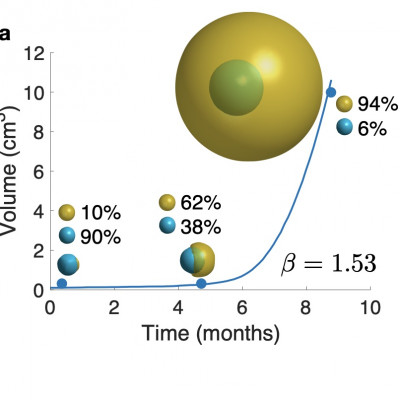Publication
Growth exponents reflect evolutionary processes and treatment response in brain metastases
B. Ocaña-Tienda, J. Pérez-Beteta, D. Molina-García, J. Jiménez-Sánchez, O. Leon-Triana, A. Ortiz de Mendivil, B. Asenjo, D. Albillo, L. Pérez-Romasanta, M. Valiente, L. Zhu, P. García- Gómez, E. González-Del Portillo, M. Llorente, N. Carballo, E. Arana, V. M. Pérez-García
npj Systems Biology and Applications 9, 35 (2023)
MOLAB authors
Abstract
Tumor growth is the result of the interplay of complex biological processes in a huge number of individual cells in a changing environment. Effective simple mathematical laws have been shown to describe tumor growth in vitro, or in animal models with bounded-growth dynamics accurately. However, results for human cancers in patients are scarce. The study mined a dataset of 1133 brain metastases (BMs) with longitudinal imaging follow-up, treated with radiosurgery (SRS) to find growth laws for untreated BMs, relapsing treated BMs, and radiation necrosis (RN). Untreated BMs showed sustained growth acceleration, most likely related to the underlying evolutionary dynamics. Relapsing BM growth was slower, most probably due to a reduction in tumor heterogeneity after SRS, which may limit the evolutionary possibilities of the tumor. RN lesions had significantly larger growth exponents than relapsing BMs, providing a way to differentiate them from true progression. This may help in solving a problem of clinical relevance, since the first condition may resolve spontaneously, and not require further work-up, while the second requires therapeutic action.















